As the temperatures begin to cool, we were reminded of this incredible feat by some coffee loving South Africans, originally published in Issue 42, December 2022.
With 20 bags of Bean There coffee and a trusty Stanley plunger to brew it, an intrepid team of South Africans set out to be the first to summit perilous K2. Only 377 climbers have ever managed to reach the top of this mountain, and now that number is 379! In comparison, over 9,000 mountaineers have reached the top of Mount Everest. John Black tells us the tale of the first two SA climbers to make it all the way.
Words by John Black
What started off as a fascination 25 years ago, when I read a book about it in 1997 and have been wanting to climb it ever since. I knew I needed a lot of experience and I focused on other mountaineering goals first. But eventually I got there.
I have climbed the “Seven Summits” – the highest mountain on each continent, climbed Kilimanjaro nine times, climbed in the Andes 5 times, it’s safe to say I climb a lot. I had been chasing K2 as a goal about 10 years ago and it finally became a reality when we left home on 13 June 2022.
We were a team of four SA Climbers myself, John Black, Warren Eva, Allan Dickinson and Robby Kojetin. We met each other through the Boy Scout movement when we were in our teens and have embarked on many, many diverse adventures since then. You have to trust the people you’re with when attempting a summit of 8611m.
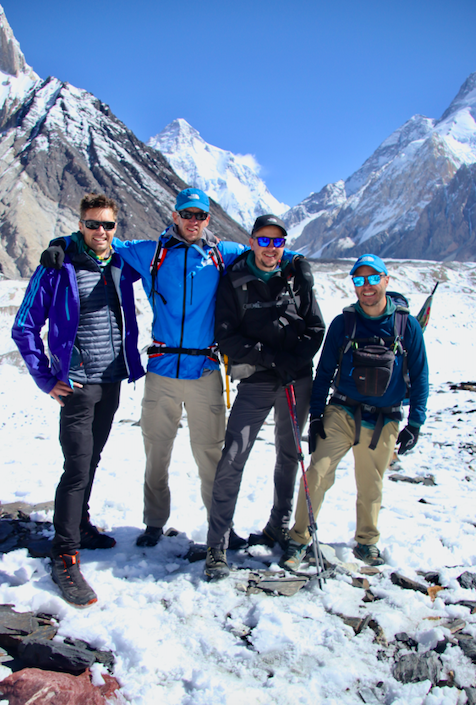
The trek to get to K2 is renowned as being equally beautiful and brutal, and it lived up to its reputation, definitely not to be underestimated. The beauty and ruggedness was truly staggering. Nothing prepares you for how steep the Karakoram mountain range is until you are there. So many peaks we had read about, so much history and so much tragedy. The first views of K2 from Concordia were literally breath-taking. Seeing K2 in the flesh is a moment to remember, it’s spectacular and frightening in equal measure and we stared at it for the next 11km trek to our Base Camp (BC). The skies were clear and remained clear for many days.
We arrived at BC and immediately set about readying ourselves for many weeks in and above it. A few days later did our first load carry. It was a rude awakening. Not only the altitude jump from 5000m to 6200m, but also the terrain and the sustained level of climbing, exposure and steepness on the mountain. We deposited gear at Camp 1, and returned to BC the same day, a 12hr round journey. During the day Robby got ill with pulmonary oedema and the next day would be evacuated from BC in a chopper.
We spent four days in BC before doing another rotation and carry up to C1, where we slept a night, then up to C2 at 6700m for 2 nights and back to BC. Both C1 and C2 were incredibly exposed and precarious, and the route is steep the entire way. The famous House Chimney was a “fun” challenge. Named after American climber Bill House, this is a 30 metres tall crack in a rock wall used to scale to a higher level. Back at Basecamp we rested for a few days and were planning a third rotation and load carry up the mountain, but bad weather set in and bogged us down in BC for over 2 weeks.
We spent a total of 30 nights in basecamp, during that time we quickly developed a routine. Our tents would start getting light around 4:30am, the sun would hit the tents by 7:30am, and thereafter things would warm up. we would meet in the dining tent at 7:40 for our first cup of all important coffee. Breakfast would follow at 8am, a couple more cups of good coffee and our chores for the day would start. Coffee quickly became the social centre of our basecamp life where we would invite people in and while away many hours whilst we waited for weather to clear and for ourselves to acclimatise to the higher elevations.
Water boils at 92 degrees at altitude. It is a very slow process at altitude because of reduced oxygen to fire the stove, plus you start with snow, so it first needs to melt, and then boil from zero degrees, so it takes longer (and it cools down faster (hence we used Stanley mugs to keep it hotter for longer. We used a little Jetboil stove and a special Jetboil pot system that works with the stove using heat exchanger technology to be more fuel efficient. I am sure there are other methods, but a plunger was our method of choice. We used coffee beans and plunger with water boiled on the stove for our trek in to BC (100km) as well as at BC, Camp 1 and Camp 2, but above Camp 2 we resorted to instant coffee to save the weight of the plunger.
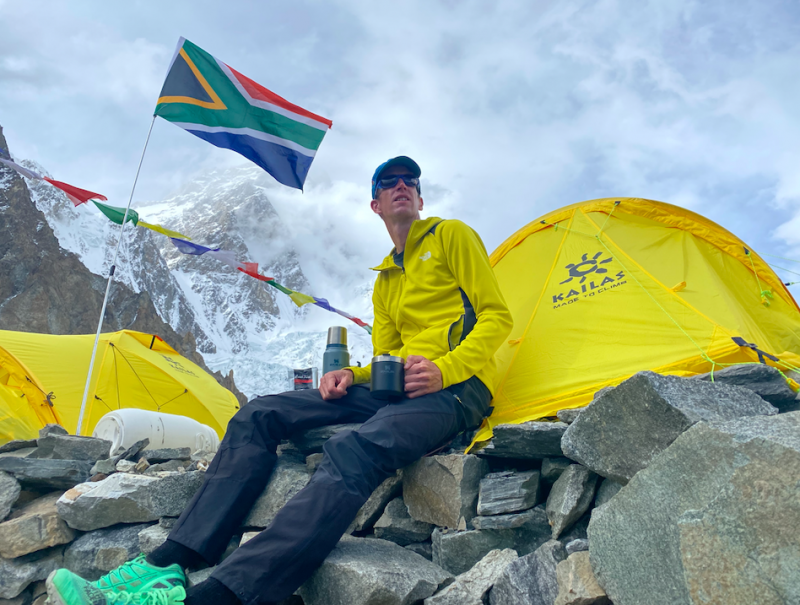
When the weather finally cleared it was very late in the season and the window of opportunity for another acclimatisation rotation had all but shut on us. We decided to embark directly on a summit rotation and to carry more than planned. During our rotation, Allan had decided to not proceed above C1 and to remain in BC in a support and communications role.
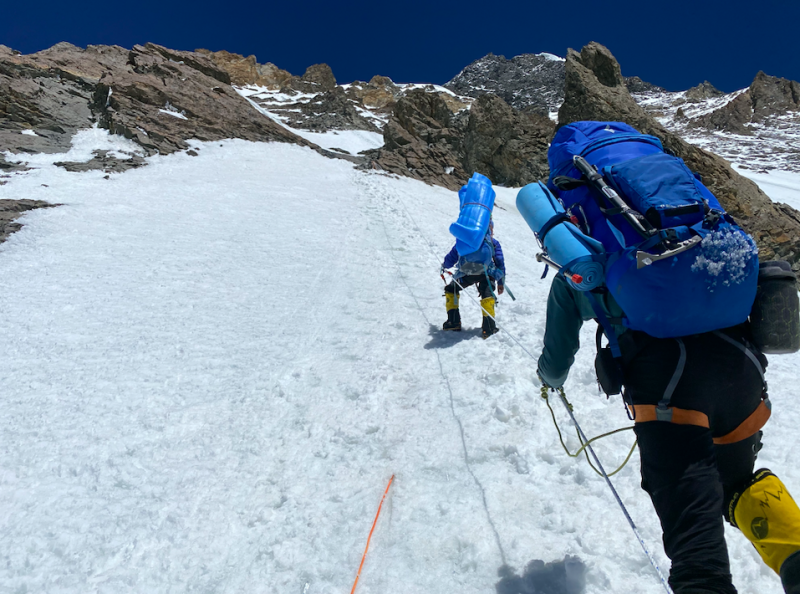
With many hundreds of butterflies in our stomachs, Warren and I left Basecamp on 18 July a month after leaving home. We retraced our steps to C1 for a night, then on to C2 for night before proceeding up to C3 via the Black Pyramid, a very, very tough day indeed. We spent a night in C3 at 7100m and the next day climbed towards C4 using Oxygen.
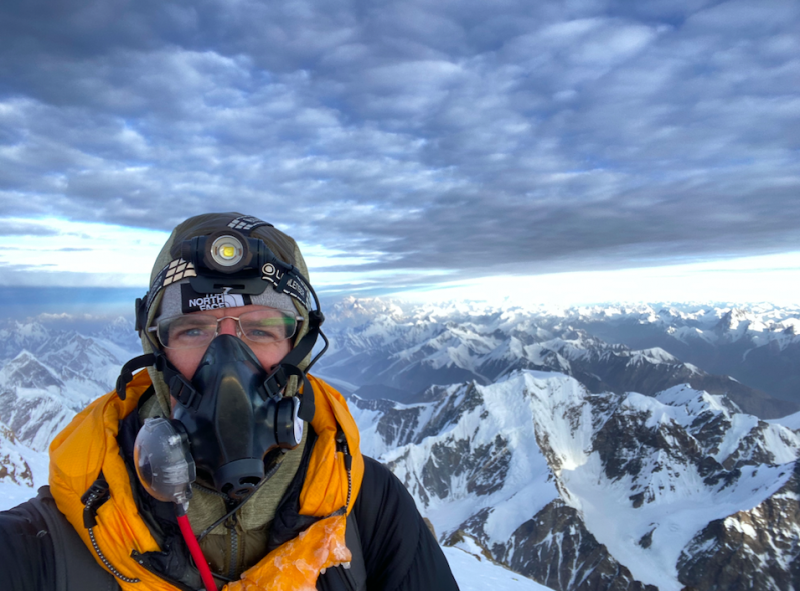
Having studied the mountain for many years it was amazing to be actually seeing and experiencing all the places I had read about. We arrived at C4 at 7700m quicker than expected as we were under the impression it was at 7800-7900m. This may seem like a good thing, but it was disappointing as it meant a longer summit day. Having arrived early afternoon, we set up camp and rested a bit. As had become customary over the last week, the wind picked up around 6pm and howled non-stop. The wind was too high for a safe summit, but we expected it to calm at around 1am. To our surprise, the wind abated at 9pm and we decided to leave asap to try and avoid the crowds that we expected. By 10pm we were on the trail, climbing up the shoulder in the light of our headlamps.
We arrived at The Bottleneck a while later and became climbing up what we knew was the start of a very dangerous section on mountaineering. Warren and I had promised to move as quickly as we could and we made great progress up the Bottleneck with the infamous serac hanging ominously above us. Serac is a block or column of glacial ice, often formed by intersecting crevasses on a glacier. Commonly house-sized or larger, they are dangerous to mountaineers, since they may topple with little warning.
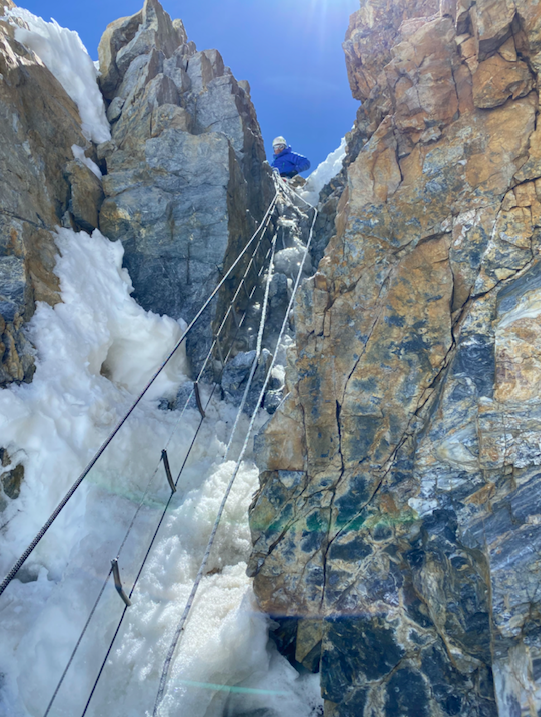
Still in the dark we crossed the extremely exposed and perilous traverse before turning and climbing up the snow gully and ramp for what would be some incredibly challenging climbing, first through loose sugar snow that made getting any purchase very difficult and provided us with a few minutes of heart stopping fear when one anchor popped and a second started to migrate out. Having overcome that near disaster we moved into 2-3 pitches of very tricky blue ice followed by some more reasonable climbing towards the summit ridge and a spectacular sunrise over the Karakoram before finally arriving at the summit around 5am for a perfect summit morning and brilliantly clear views.
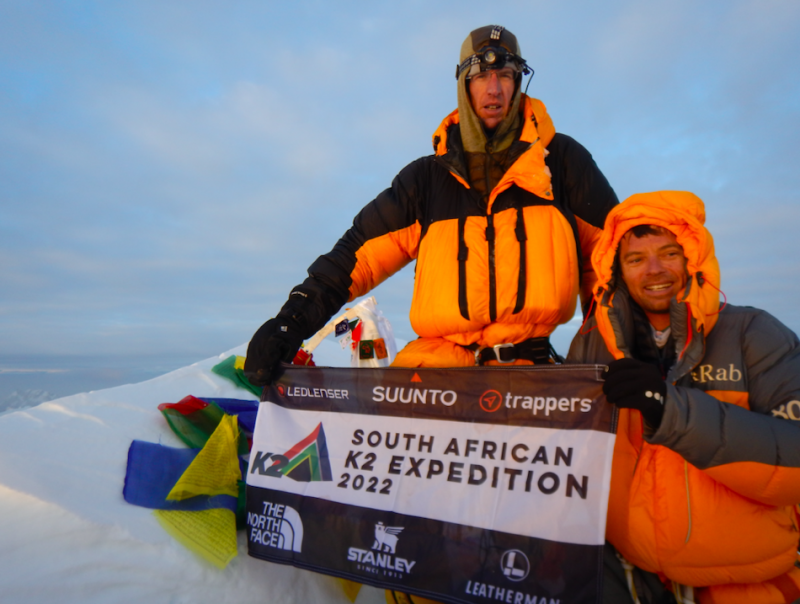
A mere 20 minutes later we were descending, knowing full well that this was going to be a very dangerous two days down. The rock fall danger that K2 presented all the time was even more real when descending and facing away from the mountain. We dropped to C2 that night and decided that to continue down in the dark was madness as we would not be able to see the falling rocks (and there were many, all day long). After an early start we descended to C1 where we found a second tent of ours destroyed by falling rock – exactly where we had slept. It was only back in Advanced Base Camp that we felt safe enough to breathe a sigh of relief and celebrate our success before the 2.5hr trek down to BC, which was exhausting with our nearly 30kg packs.
Warren and I had finally put South Africans on the top of K2 and we were elated to do be able to add a little bit to South African mountaineering history and to provide a good story back home. The interest and media coverage of our expedition had far exceeded our expectations.
The adventure was not over quite yet though. After three days in BC sorting out logistics we departed for Concordia, Ali Camp and then ascend up and down the Ghondoroko Pass (5600m). The 1000m of climbing and 40km of trekking on day two took 19 hours and we paid the price for condensing a four day trek into two. The arduous trek out and the travel home gave us some time to process the experiences that we had enjoyed over nearly 8 weeks. The realisation of a lifelong dream.
Caption: Many thanks to my sponsors Leatherman, Ledlenser, The North Face, Trappers, Stanley and Suunto